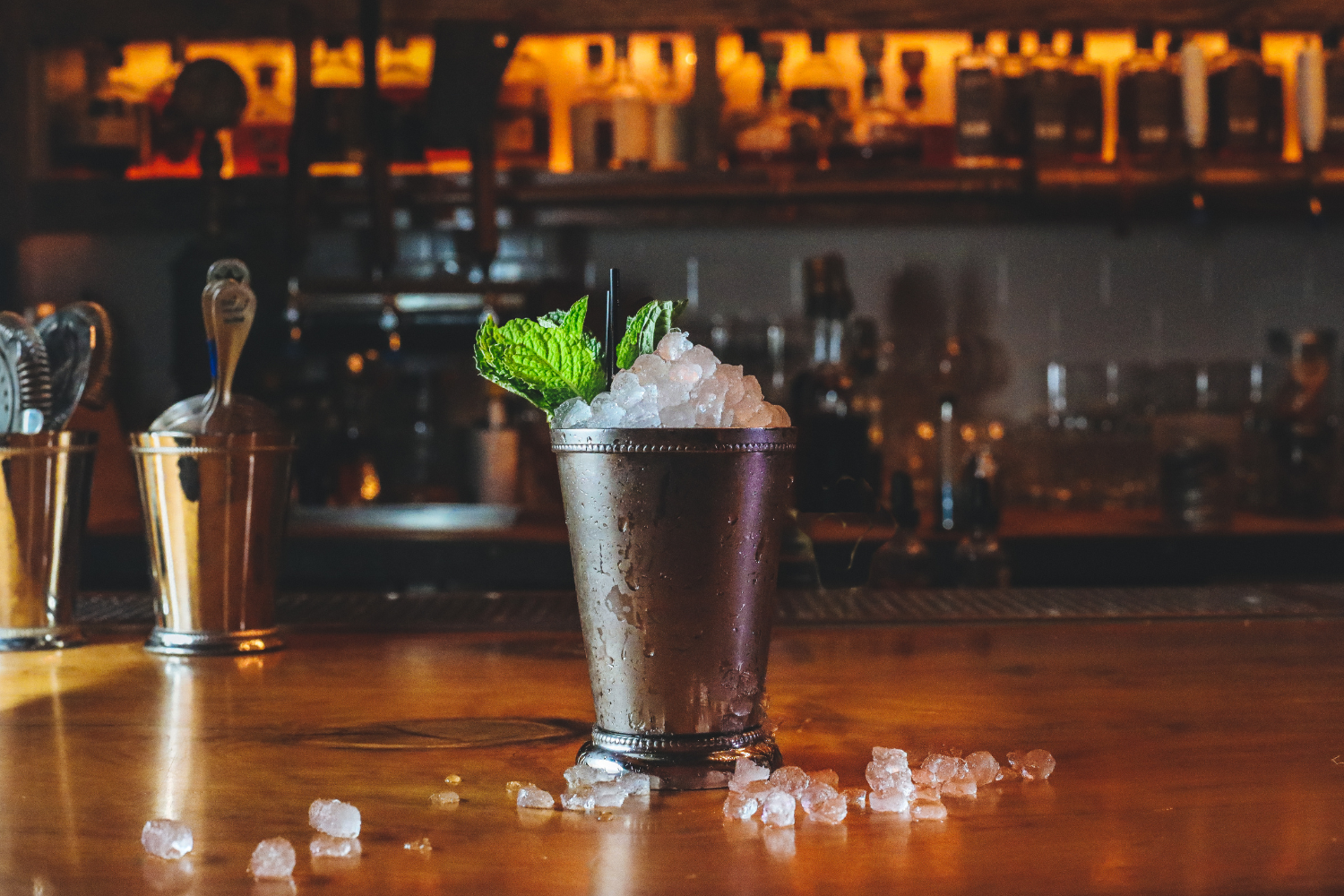Discover the Rich History, Production Process, and Unique Characteristics of Single Malt Whisky: Enhance Your Whisky Knowledge and Appreciation
If you're a whisky enthusiast or just starting to explore the fascinating world of spirits, single-malt whisky is a gem that deserves your attention. With its rich history, meticulous production process, and distinct characteristics, single malt whisky has captivated the palates of connoisseurs and newcomers alike. In this comprehensive guide, we will delve into the origins and evolution of single malt whisky, uncover the intricate production methods, and unravel the unique traits that make it a cherished spirit. So grab a dram, sit back, and embark on a journey to discover the rich history, production process, and unique characteristics of single malt whisky. Enhance your whisky knowledge and appreciation with every sip.
The Evolution of Single Malt Whisky: A Historical Exploration

Early Origins: A Spirit with Ancient Roots
The story of single malt whisky dates back centuries, with its roots deeply embedded in the landscapes of Scotland. The precise origins are shrouded in the mists of time, but it is believed that whisky production began in the monastic communities of medieval Scotland. Monks cultivated the art of distillation, initially for medicinal purposes, and gradually perfected the techniques to craft the amber elixir we know today.
Rise of Commercial Distilleries: From Local Brews to Global Fame
As the centuries passed, whisky production transitioned from monastic stills to commercial distilleries. In the 19th century, advancements in technology, such as the invention of the continuous still, enabled mass production and opened the doors to the global whisky market. Distilleries like Glenlivet, Macallan, and Talisker gained recognition for their exceptional single malt whiskies, captivating the taste buds of whisky aficionados worldwide.
Prohibition and Revival: A Rollercoaster Ride
The early 20th century brought challenging times for the whisky industry, with the advent of Prohibition in the United States dealing a severe blow. However, as the ban lifted and the whisky market regained its momentum, single malt whiskies experienced a renaissance. The revival sparked a renewed appreciation for the craft and heritage behind each bottle, solidifying single malt whisky's status as a cherished spirit.
The Meticulous Production Process: From Barley to Bottle

Malting: Awakening the Barley
The journey of a single malt whisky begins with the humble barley grain. Harvested and carefully selected, the barley is subjected to the malting process. Malting involves steeping the barley in water, allowing it to germinate, and then halting germination through kilning. This delicate process triggers the release of enzymes that convert starches into fermentable sugars, laying the foundation for the whisky's flavor profile.
Mashing: Unlocking the Sugars
Once malted, the barley goes through mashing, where it is ground into grist and mixed with hot water in a mash tun. The hot water extracts the sugars from the barley, creating a sugary liquid known as wort. This sweet liquid is vital for the subsequent fermentation process.
Fermentation: The Magic of Yeast
The wort is transferred to fermentation vessels, typically large wooden or stainless steel washbacks. Here, yeast is introduced to the wort, kick-starting the fermentation process. Yeast converts the sugars into alcohol, producing a low-alcohol liquid known as wash.
Distillation: The Art of Concentration
Distillation serves as the soul of whisky production, playing a crucial role in transforming the wash into pure spirit. The wash, the result of the fermentation process, is carefully distilled twice in copper stills, which typically include a wash still and a spirit still.
Wash Still: The First Distillation
The wash still, also known as the pot still, is where the initial distillation takes place. The wash is heated, and its alcohol content is vaporized, rising through the neck of the still. The vapor then travels through the lyne arm, a pipe that leads to the condenser. As the vapor cools within the condenser, it condenses back into liquid form, known as low wines.
Spirit Still: The Second Distillation
The low wines obtained from the wash still undergo a second distillation in the spirit still. This process further refines the liquid, focusing on capturing the desirable flavors and aromas. As the low wines are heated once again, alcohol vapor rises and travels through the neck of the spirit still. The vapor passes through a distinctive section called the swan neck, which contributes to the purification process by removing impurities. Eventually, the vapor reaches the condenser, where it condenses back into liquid form, known as new-make spirit.
The Unique Characteristics of Single Malt Whisky: A Taste Worth Savoring

One of the most captivating aspects of single malt whisky is its distinct characteristics that differentiate it from other types of whisky. Each sip offers a symphony of flavors, aromas, and textures that ignite the senses. Let's explore the remarkable traits that make single-malt whisky a truly remarkable spirit.
1. Single Malt: The Grain and the Region
Single malt whisky is crafted exclusively from malted barley and produced at a single distillery. This distinction ensures that the whisky embodies the unique character of both the grain and the region it originates from. Each distillery brings its own traditions, water sources, and maturation techniques, resulting in a diverse range of flavors that showcase the terroir.
2. Flavors: From Delicate to Robust
Single malt whiskies offer an impressive spectrum of flavors, ranging from delicate and floral to rich and robust. The choice of barley, malting techniques, fermentation duration, and aging process all contribute to the final flavor profile. Whether you prefer the gentle notes of honey, vanilla, and citrus or the bold embrace of peat smoke, spices, and dark chocolate, there's a single malt whisky to suit every palate.
3. Age Maturation: Unraveling Complexity
Maturation is a crucial stage in whisky production that shapes its complexity and depth. Single malt whiskies often spend years aging in oak casks, absorbing flavors from the wood and undergoing chemical transformations. During this time, the whisky mellows, develops new flavors, and gains complexity through interaction with the cask's previous contents, such as bourbon, sherry, or wine. The age statement on a bottle signifies the youngest whisky within the blend, offering insight into its maturity and character.
4. Non-Chill Filtering: Preserving Integrity
In recent years, non-chill filtering has gained popularity among whisky enthusiasts and distilleries aiming to preserve the whisky's natural integrity. Chill filtering involves cooling the whisky to remove certain compounds that may cause cloudiness when exposed to lower temperatures. However, this process can also strip away some flavors and textures. Non-chill filtering avoids this practice, resulting in whiskies with a fuller mouthfeel and a more authentic representation of the distillery's craft.
5. Cask Strength: The Undiluted Essence
Cask strength single malt whisky offers enthusiasts a unique and intense experience. Unlike whiskies that are diluted with water to achieve a specific alcohol content, cask strength whisky is bottled directly from the cask without any dilution. This means that the whisky retains its original alcohol concentration, often ranging from 50% to 60% ABV (alcohol by volume) or even higher. The absence of dilution allows the full flavor spectrum of the whisky to shine, providing a potent and unadulterated tasting experience.
6. Peat Influence: A Smoky Symphony
Peat, a fuel derived from decomposed vegetation, has a significant impact on the flavor profile of certain single malt whiskies. During the malting process, some distilleries dry their barley over burning peat, infusing the grains with its distinct smoky character. The smoke from the peat permeates the barley, creating a range of flavors, from subtle hints to intense and medicinal notes. Peat is often associated with whiskies from regions such as Islay, renowned for their peaty and smoky expressions.
Summary

The journey through the rich history, production process, and unique characteristics of single malt whisky has revealed a world of wonder and delight. From its ancient origins in Scottish monastic communities to the global fame it enjoys today, single malt whisky has withstood the test of time and captivated the hearts of whisky enthusiasts worldwide.
The meticulous production process, from malting and mashing to fermentation and distillation, showcases the artistry and precision required to create this exquisite spirit. Each step contributes to the development of flavors and aromas that make single malt whisky a truly remarkable sensory experience.
The unique characteristics of single malt whisky, from its diverse flavor profiles to the influence of peat, cask strength, and maturation techniques, offer a wide range of options to suit every whisky lover's palate. Whether you prefer the gentle and floral notes of a Speyside whisky or the smoky and peaty expressions of Islay, there is a single malt waiting to be discovered.
Throughout this journey, we have addressed some common questions and provided insights to enhance your whisky knowledge and appreciation. Remember, single malt whisky can be enjoyed in various ways, but taking the time to savor each sip allows you to fully appreciate the complexity and craftsmanship behind this cherished spirit.
So, whether you are a seasoned connoisseur or embarking on your whisky exploration, single malt whisky invites you to indulge in its splendor. Let it be your companion on moments of celebration, contemplation, and connection. Raise a glass, and may every sip of single malt whisky be a toast to the rich history, production process, and unique characteristics that continue to shape this beloved spirit.
Cocktail Critters: Whisky Accessories

If you're a whisky enthusiast looking to enhance your drinking experience, we highly recommend checking out our unique and captivating whisky accessories. Whether it's the Scotch Ness Critter Whisky Stone, inspired by the legendary Loch Ness Monster, or our stylish Whisky Pins, Stickers and more, these products are designed to add a touch of personality and flair to your whisky moments.
Don't miss the opportunity to elevate your whisky enjoyment with these delightful and conversation-starting accessories. Head over to Cocktail Critters today and explore our collection.
Cheers to a truly unforgettable whisky experience!
Frequently Asked Questions (FAQs)
Q1: What is the difference between single malt whisky and blended whisky?
A1: Single malt whisky is made exclusively from malted barley and produced at a single distillery, showcasing the unique characteristics of both the grain and the distillery. On the other hand, blended whisky is a combination of different whiskies, including malt and grain whiskies sourced from multiple distilleries.
Q2: How long does single malt whisky typically age?
A2: The aging period of single malt whisky can vary significantly. While there is no minimum aging requirement for it to be considered single malt, many expressions are aged for a minimum of three years. Some single malts are aged for over a decade or even several decades, allowing the whisky to develop greater complexity and depth of flavor.
Q3: Does single malt whisky have to be from Scotland?
A3: Traditionally, single malt whisky is associated with Scotland, as it originated there and adheres to strict regulations. However, distilleries in other countries, such as Japan, India, and the United States, have also started producing their own versions of single malt whisky.
Q4: Can you mix single malt whisky with other spirits or mixers?
A4: Single malt whisky is often best enjoyed neat or with a splash of water to unlock its full range of flavors. However, personal preference plays a significant role, and some individuals may choose to mix single malt whisky with other spirits or use it in cocktails. Ultimately, it's a matter of individual taste and experimentation.
Q5: What is the best way to appreciate single malt whisky?
A5: To fully appreciate single malt whisky, it's recommended to take it slowly and savor the experience. Start by observing the whisky's color and aromas before taking a small sip. Allow the whisky to coat your palate, noting the different flavors and textures. Take your time to explore and enjoy the complexities that each sip reveals.
Q6: Are there any health benefits associated with moderate whisky consumption?
A6: While moderate alcohol consumption, including whisky, has been linked to certain health benefits, it's essential to prioritize responsible drinking. Any potential health benefits should be balanced with the risks associated with excessive alcohol consumption. It's always advisable to consult with a healthcare professional regarding alcohol consumption and individual health circumstances.




